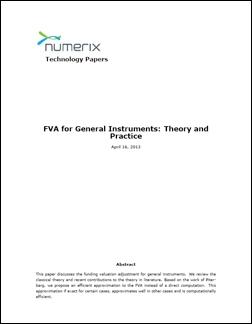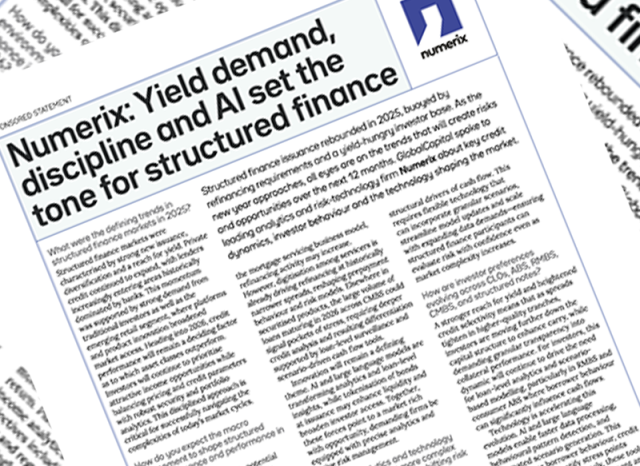
Funding Value Adjustment for General Financial Instruments: Theory and Practice
Download this Complimentary Numerix Quantitative Research Paper
In this research paper by the Numerix Quantitative Development Team, details a new methodology for calculating Funding Value Adjustment (FVA) for vanilla and exotic deals at both the trade, and portfolio level.
The methodology for FVA proposed by Numerix in this paper expands upon Vladimir Piterbarg’s framework for valuation in the presence of real collateral.1 This Numerix approach is one of the first that allows the computation of the FVA calculation for arbitrary instrument types; even the most complex and bespoke instruments with optionality, callability and triggers. It also allows for an efficient deal-by-deal computation, which is attractive for parallelization.
Built on the same foundational analytics and algorithmic approach for calculating Counterparty exposure2, American Monte Carlo is employed to determine the distribution of prices under future dates resulting in accurate, real-time FVA computations for both exotics and vanilla instruments.
____________________________
1Vladimir Piterbarg (2010), “Funding beyond discounting: collateral agreements and derivatives pricing,” RISK, Feb.
2Alexandre Antonov, Serguei Issakov and Serguei Mechkov (2011) "Algorithmic Exposure and CVA for Exotic Derivatives."
In this research paper by the Numerix Quantitative Development Team, details a new methodology for calculating Funding Value Adjustment (FVA) for vanilla and exotic deals at both the trade, and portfolio level.
The methodology for FVA proposed by Numerix in this paper expands upon Vladimir Piterbarg’s framework for valuation in the presence of real collateral.1 This Numerix approach is one of the first that allows the computation of the FVA calculation for arbitrary instrument types; even the most complex and bespoke instruments with optionality, callability and triggers. It also allows for an efficient deal-by-deal computation, which is attractive for parallelization.
Built on the same foundational analytics and algorithmic approach for calculating Counterparty exposure2, American Monte Carlo is employed to determine the distribution of prices under future dates resulting in accurate, real-time FVA computations for both exotics and vanilla instruments.
____________________________
1Vladimir Piterbarg (2010), “Funding beyond discounting: collateral agreements and derivatives pricing,” RISK, Feb.
2Alexandre Antonov, Serguei Issakov and Serguei Mechkov (2011) "Algorithmic Exposure and CVA for Exotic Derivatives."


